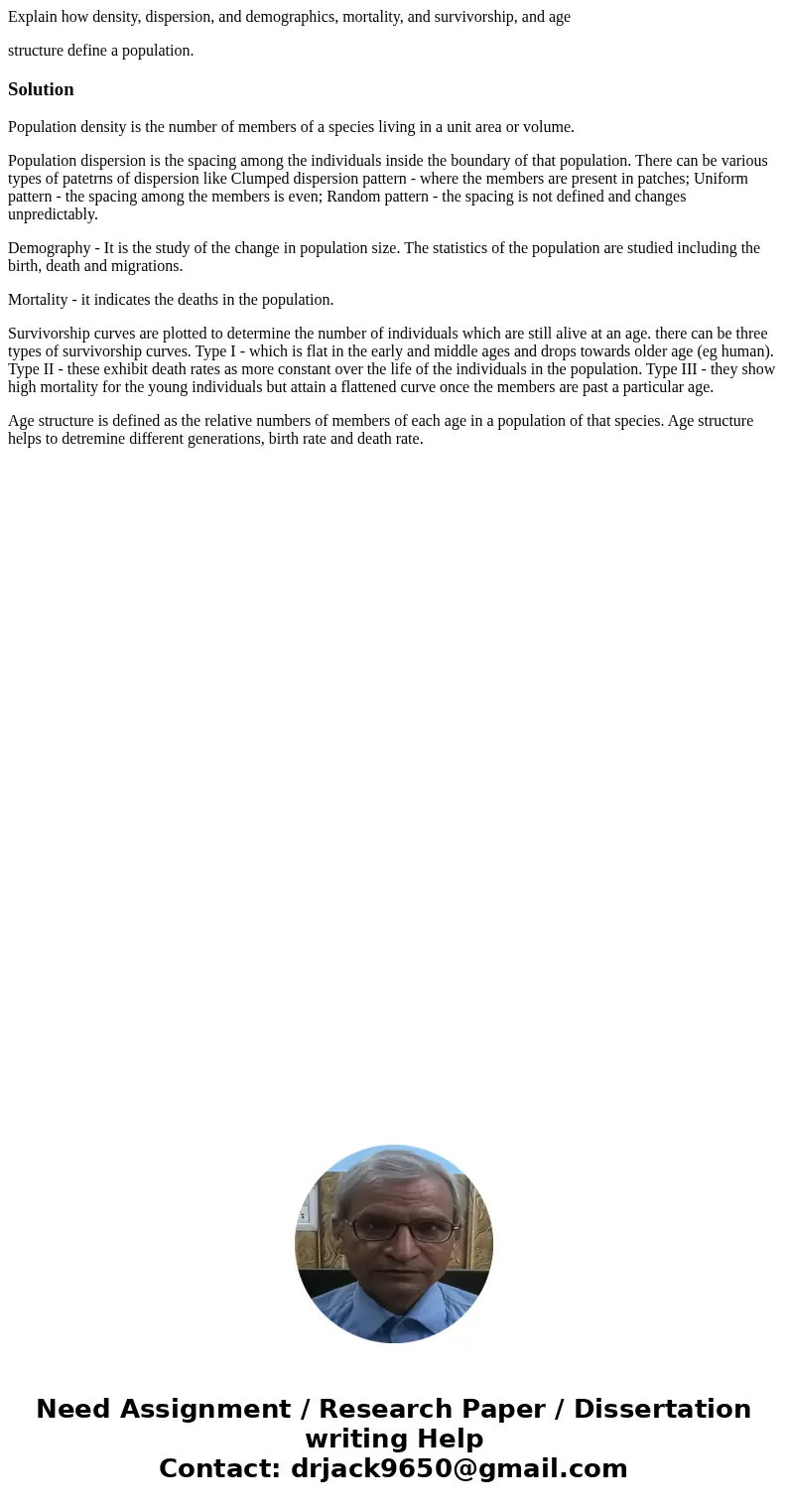Explain how density dispersion and demographics mortality an
Explain how density, dispersion, and demographics, mortality, and survivorship, and age
structure define a population.
Solution
Population density is the number of members of a species living in a unit area or volume.
Population dispersion is the spacing among the individuals inside the boundary of that population. There can be various types of patetrns of dispersion like Clumped dispersion pattern - where the members are present in patches; Uniform pattern - the spacing among the members is even; Random pattern - the spacing is not defined and changes unpredictably.
Demography - It is the study of the change in population size. The statistics of the population are studied including the birth, death and migrations.
Mortality - it indicates the deaths in the population.
Survivorship curves are plotted to determine the number of individuals which are still alive at an age. there can be three types of survivorship curves. Type I - which is flat in the early and middle ages and drops towards older age (eg human). Type II - these exhibit death rates as more constant over the life of the individuals in the population. Type III - they show high mortality for the young individuals but attain a flattened curve once the members are past a particular age.
Age structure is defined as the relative numbers of members of each age in a population of that species. Age structure helps to detremine different generations, birth rate and death rate.

 Homework Sourse
Homework Sourse